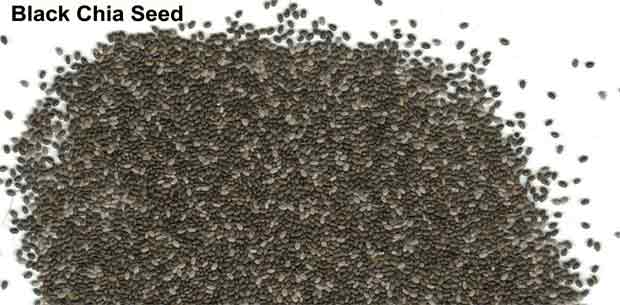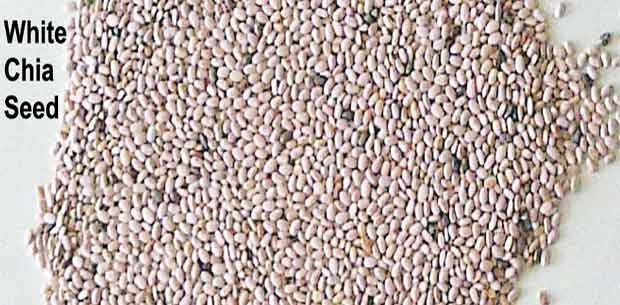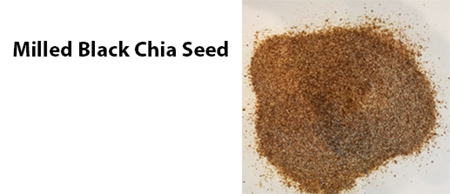Flax Seed Concerns – Should you be worried?
Some comments, laws etc. from government agencies which give an indication that there are problems associated with human consumption of flax seed.
USDA – link to search for flaxseed – when you get to the flaxseed page, a footnote at the bottom says “Up to 12 percent flax seed can safely be used as an ingredient in food.”, although this is a reasonable amount, it does mean there are concerns about over consumption.
FDA – link – shows that the GRAS (Generally Regarded As Safe) application was withdrawn. GRAS status has not been granted to date.
Health Canada – had recommended that intake be limited in general, and should not be consumed if some medications are being taken.
Government of France – (Translation of Article 2-1, which actually was withdrawn last year, is shown below the original). This concern was with flaxseed oil.
Article 2-1 Créé par Décret n°78-840 du 9 août 1978 (JORF 11 août 1978).
La teneur en acide érucique des huiles, des graisses et de leurs mélanges, destinés tels quels à la consommation humaine, doit être calculée sur la teneur totale de ces produits en acides gras dans la phase grasse. Elle ne doit pas dépasser 5 p. 100.
“It is forbidden to have for sale, put on sale or sell under any name or form, for human consumption flaxseed oil, either natural or mixed with other food products”
The main use of flax seed in the world is for industrial applications, with two of the more common products being Linseed oil and Linoleum. Flax has never been considered an important nutritional source throughout the history of mankind, and has been questioned as being a “safe” food, since it contains a number of components that can interfere with normal development of humans and animals.1,2,3,4,5,6,7,8,9,10,11,12,13 The term that is often used to describe these components is antinutritional factors, that is substances that impair the food/feed value of food constituents.
Human consumption of flaxseed oil has been banned in France since 1973, and is restricted in Germany, Switzerland and Belgium.22,23,24 In the USA, human consumption is not prohibited, however flaxseed has not received GRAS (Generally Regarded as Safe) status from the FDA. This means that should a company decide to include flax in a food product, it shall be liable for the safety of that product.25,26
Restrictions on human use of flaxseed as a food are due mainly to the presence of toxic cyanogenic compounds (linamarin, linustatin, and neolinustatin) which yield hydrocyanic acid or prussic acid on enzymatic hydrolysis. In addition flaxseed contains a vitamin B6 antagonist as well as trypsin inhibitors.27,28,29,30,31,32
Research with animals has shown the negative effects eating flax has on pregnancy and reproductive development. These effects have been attributed to the action of the compound diclycoside ecoisolariciresinol (SDG) which through microbial action acts as estrogenic depressor or potentiator in mammals. Flax is the richest source of SDG known, and therefore special caution is recommended if it is consumed during pregnancy and lactation.33,34 The Government of Canada, through Health Canada (2004), recommends avoiding the use of flax if you are pregnant or breast-feeding.35
Owing to the general availability of flax, and because of its relatively low price, there have been many attempts to use it as an ω-3 fatty acid source in animal production. Numerous publications have shown the negative effects that the anti-nutritional factors in flax have on the development of layers, broilers, beef cattle and rabbits.1,3,4,5,6,8,10,11,12,13,36,37 Thus in order to use flax the seed must be detoxified using solvents, and even then the seed cannot be completely detoxified.38,39
None of the toxic factors found in flax have been found in chia.14,15,16,17,18,19,20,21,40
References
1. Treviño J, Rodriguez ML, Ortiz LT, Rebole A, Alzueta C. Protein quality of linseed for growing broiler chicks. Anim Feed Sci Tech. 2000; 84:155-66.
2. Toug JC, Chen J, Thompson LU. Dose, timing, and duration of flaxseed exposure affect reproductive indices and sex hormone levels in rats. J. Toxicol Env Heal 1999; 8:555-70.
3. Novak, C. and S. Scheideler. The effect of calcium and/or vitamin D, supplementation of flax based diets on production parameters and egg composition. Lincoln, USA: University of Nebraska Cooperative Extension MP 70 1998.
4. Bond JM, Julian RJ, Squires EJ. Effect of dietary flaxseed on broiler growth, erythrocyte deformability and fatty acid composition of erythrocyte membranes. Can J Anim Sci. 1997; 77:279-86.
5. Prasad,1997 K. Dietary flax seed in prevention of hypercholesterolemic atherosclerosis. Atherosclerosis 1997; 132:69-76.
6. Ajuyah AO, Hardin RT, Sim JS. Effect of dietary full fat flax seed and without antioxidant on the fatty acid composition of major lipid classes of chicken meats. Poultry Sci. 1993;72:125-36.
7. Bell JM, Keith MO. Nutritional evaluation of linseed meals from flax with yellow or brown hulls, using mice and pigs. Anim Feed Sci Tech 1993; 1,2:1-18.
8. Bhatty RS. Further compositional analyses of flax: mucilage, trypsin inhibitors and hydrocyanic acid. Journal of American Oil Chemists´ Society 1993; 9:899-904.
9. Batterham ES, Andersen LM, Baigent DR, Green AG. Evaluation of meals from linola low-linolenic acid linseed and conventional linseed as protein sources for growing pigs. Anim Feed Sci Tech 1991; 3-4:181-90.
10. Lee KH, Olomu JM, Sim JS. Live perfomance, carcass yield, protein, and energy retention of broiler chickens fed canola and flax full-fat seeds and the restored mixtures of meal and oil. Can J Anim Sci. 1991; 71:897-903.
11. Bell JM. Nutritional characteristics and protein uses of oilseed meals. In: Robbelen G, Downey RK, Ashri A, eds. Oil crops of the world. New York, New York, USA: McGraw-Hill Publishing Co:1989; 192-207.
12. Homer P, Schaible PJ. Poultry: feeds and nutrition. Westport, USA: AVI Publishing Co Inc 1980.
13. Kung TK, Kummerow FA. The deposition of linolenic acid in chickens fed linseed oil. Poultry Sci. 1950; 29:846-51.
14. Ayerza R(h), Coates W. The omega-3 enriched eggs: the influence of dietary linolenic fatty acid source combination on egg production and composition. Can J Anim Sci. 2001; 81:355-62.
15. Ayerza R(h), Coates W. Dietary levels of chia: influence on yolk cholesterol, lipid content and fatty acid composition, for two strains of hens. Poultry Sci. 2000; 78:724-39.
16. Ayerza R(h), Coates W. An omega-3 fatty acid enriched chia diet: its influence on egg fatty acid composition, cholesterol and oil content. Can J Anim Sci. 1999;79:53-8..
17. Ayerza R(h), Coates W. An omega-3 fatty acid enriched chia diet: its influence on egg fatty acid composition, cholesterol and oil content. Abstracts of An International Conference of the Association for the Advancement of Industrial Crops September 14-18, 1997.
18. Lin KY, Daniel JR. Structure of chia seed polysaccharide exudate. Carbohyd Polym 1994; 23:13-8.
19. Weber CW, Gentry HS, Kohlhepp EA, McCrohan PR. The nutritional and chemical evaluation of chia seeds. Ecol Food Nutr. 1991; 26:119-25.
20. Ting IP, Brown JH, Naqvi HH, Kumamoto J, Matsumura M. Chia: a potential oil crop for arid zones. In: Naqvi HH, Estilai A, Ting IP, eds. New Industrial Crops and Products. Proceedings of The First International Conference on New Industrial Crops and Products, October 8-12, 1990. Riverside, California, USA: Association of The Industrial Crops and Products and The University of Arizona 1990; 197-202.
21. Bushway AA, Wilson AM, Houston L, Bushway RJ. Selected properties of the lipid and protein fractions from chia seed. J Food Sci. 1984; 49:555-7.
22. Olivier JF. La vida natural: materias grasas-lípidos. Aceites y Grasas 1996; 22:45-55.
23. Hunter JE 1988. ω-3 fatty acids from vegetable oil. In: Galli C, Simopoulos A, eds. Dietary ω3 and ω6 fatty acids: biological effects and nutritional essentiality. New York, New York, USA: NATO Scientific Affairs Division and Plenum Press 1989; 43-56.
24. Le Conseil d’Etat. 1973. Interdiction de l’huile de lin. Journal Officiel, 1523-1526.
25. Food and Drug Administration. The Flax Council of Canada: withdrawal of GRAS affirmation petition. Washington, D.C., USA: Department of Health and Human Services, U.S. Food and Drug Administration, Docket No. 96G-0096 64(65):16743 1999.
26. Food and Drug Administration. GRAS Notice No. GRN 000002. Washington, D.C., USA: Department of Health and Human Services. U.S. Food and Drug Administration, Docket No. 98S-0104 1998.
27. Haque MR, Bradbury JH. Total cyanide determination of plants and foods using the picrate and acid hydrolisis methods. Food Chem 2002; 77:107-14.
28. Vetter J. Plant cyanogenetic glycosides. Toxicon. 2000; 38:11-36.
29. Niedźwiedź-Siegień I. Cyanogenic glucosides in Linum ustitatissimum. Phytochemistry 1998; 1:59-63.
30. Center for Alternative Plant and Animal Products. Flaxseed oil contains lignans which could prevent blood clot formation and aid in brain development. Bio Options 1995; 1:7.
31. Stitt PA. Flax as a source of alpha-linolenic acid. In: Galli C, Simopoulos A, eds. Dietary ω3 and ω6 fatty acids: biological effects and nutritional essentiality. New York, New York, USA: NATO Scientific Affairs Division and Plenum Press 1989; 389-90.
32. Butler, GW, Bailey RW, Kennedy LD. Studies on the glucosidase linamarase. Phytochemistry 1965; 3:369-81.
33. Rickard SE, Thompson LU. Chronic exposure to secoisolariciresinol diglycoside alters lignan disposition in rats. J Nutr. 1998; 3:615-23.
34. Tou JCL, Chen J, Thompson LU. Flaxseed and its lignan precursor, secoisolariciresinol diglycoside affect pregnancy outcome and reproductive development in rats. J Nutr. 1998; 11:1861-8.
35. Health Canada. Flax – Draft January 19, 2004. Ottawa, Canada: Health Canada 2004.
36. Azcona JO, Schang MJ, Garcia P, Gallinger C, Suarez D, Lamelas K, Mallo G. Evalucion de distintas fuentes de acidos grasos omega-3 en dietas para pollos parrilleros.Pergamino, Argentina: Proyecto INTA 52-0106 INTA 2005.
37. Waylan AT, Dunn JD, Johnson BJ, Kayser JP, Sissom EK. Effect of flax supplementation and growth promotants on lipoprotein lipase and glycogenin messenger RNA concentrations in finishing cattle. J Anim Sci 2004; 82:1868-75.
38. Mazza G, Oomah BD. Flaxseed, dietary fiber, and cyanogens. In: Cunnane SC, Thompson LU, eds. Flaxseed in Human Nutrition. Champaign, Illinois, USA: American Oil Chemists’ Society Press 1995; 56-81.
39. Madhusudhan KT, Ramesh HP, Ogawa T, Sasaoka K, Singh N. Detoxification of commercial linseed meal for use in broiler rations. Poultry Sci. 1986; 65:164:71.120.
40. Ayerza R(h), Coates W. Dietary levels of chia: influence on hen weight, egg production, and egg sensory quality. Brit Poultry Sci 2002a; 43(2):283-90.







